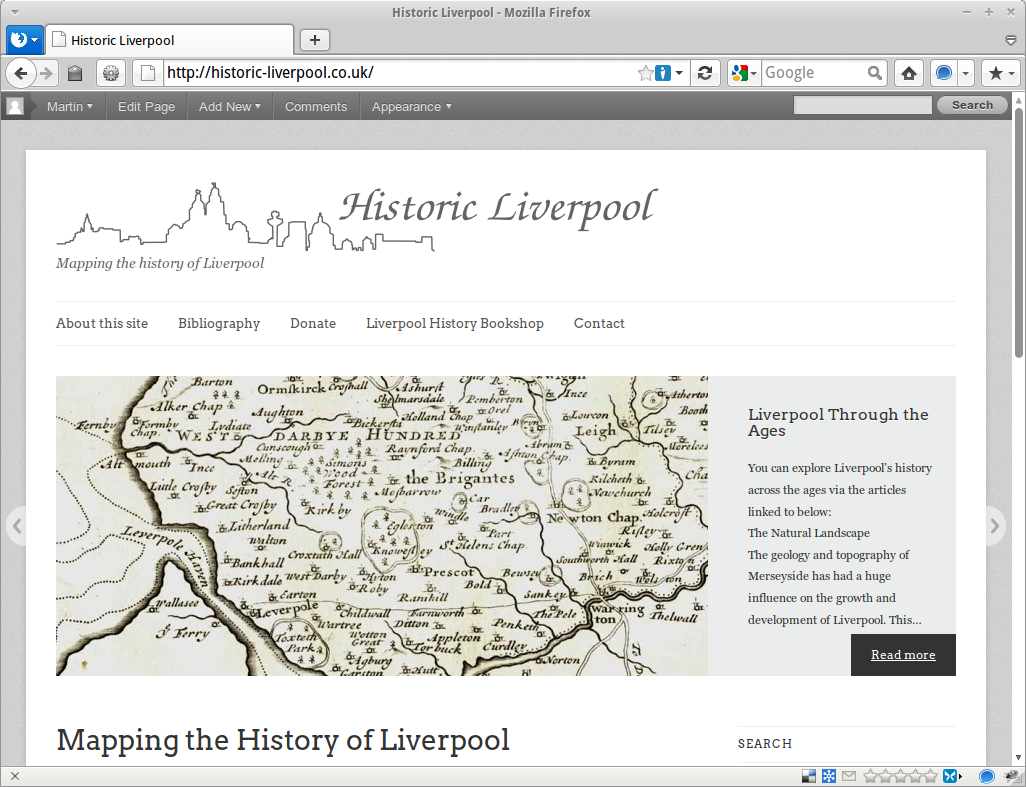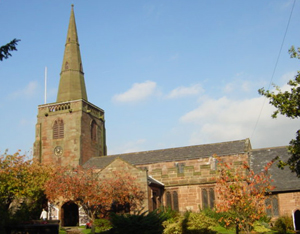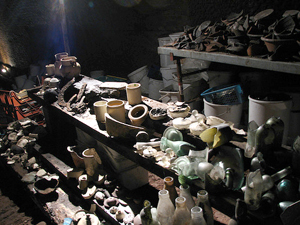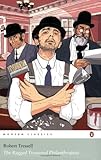Museum of Liverpool opens its doors
A press release from the new Museum of Liverpool: http://www.liverpoolmuseums.org.uk/mediacentre/displayrelease.aspx?id=960
Jul 19
A press release from the new Museum of Liverpool: http://www.liverpoolmuseums.org.uk/mediacentre/displayrelease.aspx?id=960
Jun 9

Well, now that Historic Liverpool is up, running and generally settling into its new clothes, we can get back to talking about the rest of the news! RIBA are planning tours of Liverpool, the City Council is planning to sell its historic buildings, and SevenStreets show you the best of RIBA’s upcoming Northwest Architecture Festival. Read more
May 30

I’ve been very excited about this for a little while, and though it may be just me who thinks this is cool, I’m pleased to announce the launch of the all-new, polished-and-improved, shiny-swishy Historic Liverpool!
And that’s why I’ve been neglecting this blog for several weeks now. Read more
Apr 12

Proposals for new developments at Childwall’s All Saint’s church look set to get planning permission. The plans are labelled ‘controversial’ by the Liverpool Echo.
All Saint’s is Liverpool’s oldest surviving church – parts date to the Medieval period – although the only parts of the building which will be knocked through are more modern sections of wall. In addition to this around 180 bodies may need to be exhumed and moved to the Bloodstained Acre, land to the north never before built upon. Read more
Apr 8

The Merseyside Archaeological Service (MAS) has been shut down, and now there is no longer access to the Merseyside Historic Environment Record. According to the notice on the Liverpool Museums website this was due to the removal of funding by all partners.
The MAS was set up in 1991, and received funding from the five Merseyside local authorities (Liverpool, Wirral, Sefton, Knowsley and St Helens). Historic Environment Records (HERs) grew out of the Sites and Monuments Records which began with Oxfordshire in the 1960s to cover the whole country by the 1980s. The change in name came in the last decade to reflect the increase in coverage and scope. Read more
Mar 24

The Herculaneum Docks, South Liverpool - industrial heritage no longer with us (from the World War I Document Archive)
Industrial Heritage at Risk is this year’s Heritage at Risk theme, launched today by English Heritage in conjunction with the Council for British Archaeology (CBA) and the Association for Industrial Archaeology (AIA). The annual Heritage at Risk survey launch is in October.
Liverpool is not always closely associated with ‘industry’ in the same sense as the wool industry of Manchester and Lancashire, or the coal industry of Yorkshire. Liverpool’s World Heritage Site is the ‘Maritime Mercantile City‘, and even though the Exchange buildings and the Customs house are closely linked with industry on a wider scale, it’s more accurate to class it as ‘commerce’.
However, commerce is difficult to see embodied in archaeology or buildings, and the buildings English Heritage are talking about are as often as not a product of industry, made possible by the Industrial Revolution, rather than playing a part in industrial production itself.
In fact, much of Liverpool’s built heritage fits this bill rather well.
[There is a lot more detail about the development of Liverpool’s small-scale industries (potteries, mills and the like) in the Liverpool and Toxteth sections of the Historic Liverpool website (or search for ‘mill‘ or ‘pottery‘ to see a whole lot more).]
All the sites at risk in Merseyside can be seen via a search on English Heritage’s Heritage at Risk microsite: . You can then break the list down into classes of ‘at risk’ heritage, including buildings, conservation areas, scheduled monuments and registered parks and gardens.
The industrial class of heritage is small but easy to spot: there’s the infamous case of the Stanley Dock tobacco warehouse as well as the Stanley Dock conservation area itself.
But English Heritage wants a wider debate on this, rather than just promoting the current list of at-risk buildings. So, start here if you want (in the comments!) or visit the Industrial Heritage at Risk Flickr group.
Alarmingly there’s a photo of Albert Dock in the photo pool, but as I say this discussion is about a wider appreciation of industrial heritage. Remember, the Albert Dock was once indeed at risk of demolition, and is one of the best reminders of how historic buildings can be brought back into use successfully as modern developments.
The aim of the Flickr group is to bring people together to discuss which parts of their industrial heritage are most-loved, and those which perhaps should be added to the list come October. You can, as with any Flickr group, add photos and comments of your own.
So this is a call from one Liverpool historian to others: get your photos on there and promote the best of Liverpool industrial archaeology! Here’s a few suggestions to get you thinking:
Feb 9
The theme for 2011 in Liverpool could be said to be a celebration of the city’s heroes. This centres around the anniversary of the death of Robert Tressel, author of the Ragged Trousered Philanthropists. This ‘socialist novel’ has been described as ‘seminal’, and sought to publicise the author’s criticisms of the greed of capitalism. It was also possibly the first novel about the class war.
Liverpool has a long and proud tradition of philanthropy (and class war…), which are still in evidence today, so although Tressel (born Noonan) had only a fleeting relationship with the city (he died here on his way to Canada in 1911) there is certainly a lot to talk about in this year of Liverpool City of Radicals.
In a couple of future posts I’m going to talk about the radicals, philanthropists and pioneers who have shaped Merseyside’s landscape (in quite broad terms!), but it’s worth starting off with a little round-up of the recent and future events celebrating Liverpool’s influential sons and daughters of all types.
Robert Tressell, who died at the Royal Infirmary and was buried in Walton Cemetery, will be celebrated across February in the city.
A memorial service for the author took place on 3rd February, including a recreation of his funeral. Then, readings from his most famous novel will happen on various days until 15th February.
See the Liverpool City Council Robert Tressell Celebration page for three radical events which happened in 1911, and the plans for this year’s commemorations.
One thing Liverpool is doing more and more prominently each year is art, and so Liverpool Discovers will be one of the best ways to find out about the great discoveries and inventions which can call Liverpool ‘home’.
Liverpool, the Wirral and St Helens will be the venue for a trail of art installations celebrating the lives of Liverpool’s greats, from Stephenson and his Rocket and Jeremiah Horrocks to suffragette Mary Bamber and Ronald Ross, who discovered malaria’s mode of transmission in the world’s first school of tropical medicine.
There’s now a map for you to download and follow to take in all these artworks, so get your walking shoes on and hit the streets (from 14th February!).
Slightly less Liverpool-centric, and with a questionable level of focus, is a project which is part of the Central Library redevelopment.
Liverpool City Council wants you to have your say in the selection of works to adorn a ‘Literary Pavement’ leading up to the entrance. Titles from books, cinema and music have been nominated, meaning Sgt Pepper’s Lonely Heart’s Club Band sits next to The Very Hungry Caterpillar.
As I mentioned, this is less Liverpool-centric, but another element of the project is to have a ‘Literary Liverpool’ display on the rear of the building. This gives all its space to Scousers, including Beryl Bainbridge, the late Brian Jacques, and Robert Tressell himself (ok, so we seem to have fully adopted him as an honorary Scouser).
Your role is to vote for who lands on the Pavement and who sticks to the Wall, so go and vote!
 I must admit I was only vaguely aware of The Ragged Trousered Philanthropists before late last year, and had no idea of the Liverpool connection. So I’ve bought the book, and will let you know my thoughts on it if it’s relevant to this blog. I’m certainly looking forward to picking it up, and if you want to buy a copy while supporting this blog, just click on the book cover to the left. If you buy a copy after using that link (even if you choose another edition!) then a small slice of the profits will go into helping this blog break even.
I must admit I was only vaguely aware of The Ragged Trousered Philanthropists before late last year, and had no idea of the Liverpool connection. So I’ve bought the book, and will let you know my thoughts on it if it’s relevant to this blog. I’m certainly looking forward to picking it up, and if you want to buy a copy while supporting this blog, just click on the book cover to the left. If you buy a copy after using that link (even if you choose another edition!) then a small slice of the profits will go into helping this blog break even.
If you do read it (or already have done!) let me know your thoughts! What have philanthropists ever done for Liverpool? Were their gifts to the city just guilt for their own wealthy status (often earned on the backs of the working class)? Or were they truly trying to change Liverpool for the better? Perhaps it was both.
Next time I’ll explore a couple of people who’ve had a ‘radical’ effect on the city. Who should I include?
Dec 28
It’s the end of 2010. It’s been an… interesting year politically – a coalition government for the first time in my lifetime; frequent use of the word ‘swingeing’ in many and varied ways; the Conservation Centre is shutting its doors to the public; and snow is keeping you indoors reading this.
But what else has happened this year? Anything to warm our annual nostalgia cockles?
2010 started on an optimistic note – it was the World Museum’s 250th anniversary, though this was somewhat overshadowed with the closure of the Conservation Centre.
February saw start of the excellent Streets of Liverpool blog. Later in February the keys were handed over for the new Museum of Liverpool, although controversy rose its ugly head later in the year when a historic view was shown to have been blocked.
March and April went by in a blur (oh yes, probably because I got married) and when things recovered the election was fast approaching. At the same time Lewis’s was heading for closure as everyone felt the pinch of recession.
In July the first object – a carriage from the Overhead Railway – moved into the museum, but at the same time the North West Development Agency closed its doors. Another funding source for culture had disappeared.
The Peel Waters project cropped up again and again in 2010. English Heritage expressed concerns about the effect of the new buildings on the World Heritage Site, while in later months Council Leader Joe Anderson reacted angrily to what he saw as EH’s interference with Liverpool’s development and future prospects. Meanwhile we were spoiled for heritage and arts projects, including: Edge Hill station being turned into an arts venue, Heritage Open Days bringing people into Liverpool’s historic water supply, the funding of conservation for 95,000 aerial photographs of England as well as Visible in Stone – women’s history and the built environment and in October Black History Month. Finally, Historic Liverpool underwent a bit of a redesign, although it’s far from a finished project. Here’s to another year of additions to that!
Phew! Liverpool and its heritage have had their ups and downs this year. We’ve celebrated the old, welcomed in the new (mostly) and commemorated the highs and lows of Liverpool’s past and imminent future.
Any predictions for the coming 12 months? Or is that an impossible task? And as for 2011, what kind of posts would you like to see here? More about researching Liverpool local history? Should I keep to the news and concentrate the history on Historic Liverpool? Or something completely different?
Dec 5
This week the developer Merepark unveiled a slick video showing the world what the new Liverpool Central Village will look like. Central Village is the name given to the array of shops and flats which is to be built to the north of Bold Street, and which will take in the vacant Lewis’s building on Ranelagh Street.
The thing which struck me was how similar Central Village will look to Liverpool One. The architecture is modern but not brutalist (much). Random colour schemes and harsh corners, but no 60s Piggery nightmare. The brands are all familiar too, with Odeon Cinemas being the most prominent.
But the question raised by the video is ‘Does Liverpool need another (mini) Liverpool One?’ Joe Anderson rightly hails the thousands of new jobs which this development will create (during and after construction), but what can history tell us about how this may pan out?
During the Second World War Liverpool was seen as a great place to site Royal Ordnance Factories (ROF), where munitions were produced for the war effort. It was away from the dangers of bombing which London suffered from, and out of town sites like Speke, Aintree and Kirkby were away from the bombs falling on the docks, yet well connected to those docks by rail, so easing the transport of raw materials coming into the port.
When the War was over the ROF sites adapted to become part of the new economy of the mid 20th Century. Tax incentives encouraged large companies to site factories in these areas which were unrestricted in their growth – there were few neighbours in the area and the land was flat.
There was also a ready-made labour force in the form of the thousands of people who were being moved out of central slums into new council houses, maisonettes and high-rise flats.
There were many problems with these out-of-town estates, and none more famous than the layoffs during the 1970s and 80s. Even then Liverpool was starting to develop its reputation as a city of strikers and protesters, and of a self-pity growing from a feeling of victimisation. Liverpool often asked itself: ‘Why always us?’
Part of the answer presents an interesting dilemma to those who are championing this new development. The problem with the closing factories was that they were branches of multinational corporations. These corporations ‘always’ chose Liverpool because it was the easy choice. There were no vested interests in the city, no love for the place or its people. They were here for the money, and when that left, so did they.
I don’t blame Joe Anderson for celebrating the continued surge in development in the city he loves (and this blog isn’t going to turn into an anti-Anderson moan despite the tone of recent posts!). You certainly can’t take the jobs away from the people who will definitely be employed to build the Village, and who will be staffing the shops and shiny cinemas once it’s complete.
But if history can tell us anything about our own time (and this is what this blog is about) then it’s that investment in an area is strongest when the investors have a stake in the place they’re coming to.
Having lived in places as diverse in beauty as Oxford and Swindon I’m well aware of the standard arguments against the effects of ‘clone towns’ on the quality of life in a place. One of the Liverpool’s strengths has always been its range of independent – and locally based – shops which make a trip into town an often rewarding one (think News from Nowhere, Hairy Records, Quiggins and even Wade Smith). The area around Bold Street is one of the best areas for this.
But the appearance and choice in clone towns is not the only issue, and the architecture is not in question here. The experience of those protesters at the gates of the automotive plants brings home the fact that, for long term success, a local economy must not be reliant on the continued interest of outside money.
What do you think? Will the new developments be unparalleled successes? Or is history doomed to repeat itself as Liverpool continues its transformation into a modern shopping destination?
Nov 4
Council Leader Joe Anderson has hit out at English Heritage for what he sees as the over-reaching influence and meddling of the ‘heritage lobbyists’ in the future development of Liverpool.
Anderson’s current gripe is related to the Liverpool Waters project, which English Heritage advised to be reduced. Since their input, the number of tall buildings has been reduced, and the centrepiece Shanghai Tower moved back from the waterfront.
The Daily Post has a balanced editorial stating that heritage matters should be considered hand in hand with development progress, and points out that many historic buildings have been brought back into use successfully in this and other cities. Coincidentally, part of the current Biennial art festival concentrates on the re-use of derelict buildings for public enjoyment.
So does heritage hold back development? As Naomi Peck, project manager of Peel’s Liverpool Waters development team said: “English Heritage would most probably be happy to see everything as it is, because that is what they do – they preserve old buildings… The scheme could have been perhaps a little more magnificent, but obviously we had to take into consideration it is a World Heritage Site.”
So, English Heritage preserve old buildings, and World Heritage Site = no magnificence, thank you very much.
Yes?
Looking at this from the other direction, is heritage really the stumbling block? Is the Albert Dock a less ‘magnificent’ development because of all the heritage? Or is the heritage key to its attraction? (OK, enough rhetorical questions.) The flats at the King’s Dock and in the former warehouses at the Waterloo Docks are massively successful examples of historic buildings reuse which have not harmed the historic environment. There are other developments – the very magnificent Great Court at the British Museum and World Museum Liverpool, for example – which have added modern architectural elements to historically important buildings.
However, Joe Anderson shouldn’t be surprised or dismayed when ‘heritage lobbyists’ kick up a fuss about wrecking a World Heritage Site with modern ‘ego architecture‘ (subscription required) – massive developments which are all about money and prestige, and nothing about quality of life in the long run. Anderson may have a different point of view, but I don’t want Liverpool to turn into the Shanghai/New York of the West/Europe. I want Liverpool to be The Liverpool.
The solution to Anderson’s problem is not to stop groups like English Heritage and the Civic Societies from airing their views. Rather it is for the architects to produce creative, attractive modern designs keeping in scale with the current landscape. Even completely new builds like Liverpool One can achieve this, and the Echo Arena for another great example: it’s unashamedly modern (and I’d say attractive), but it doesn’t try to take over the whole skyline.
Compare this imagined scenario to the original article:
He said: “The Wellington Rooms, in Mount Pleasant, and other listed buildings are lying derelict because of the poor designs by the architects would have trashed the building.
“The former Irish Centre was the subject of a planning application, which was even supported by the Bishop, to attach some sort of hotel on it. The architect, supported by the leader of the city council, stopped it going ahead by failing to produce a decent building, and now it is deteriorating in front of our eyes.”
OK, so that’s a bit of fun, but remember: it’s not investment that English Heritage are blocking, nor development. It’s poor architecture. There’s one easy way to get development going, and that’s to design something creative, with life-span and beauty, and which adds to, and doesn’t replace, the amazing architecture we have been left by those who came before us.
Note: all views in this post are my own.
Linen Theme by The Theme Foundry
Copyright © 2024 . All rights reserved.